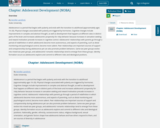
The multi-lesson "Best Class/Worst Class" project provides a way for students and professor to set expectations for course performance collaboratively, while simultaneously modeling productive online interaction strategies. Students become more aware of their own learning process and the processes of those with whom they will be working, creating necessary bridges to successful collaboration. In addition, students are able to develop practical skills in navigating the online environment before being tasked with heavily-weighted course components.This project is designed to be implemented alongside discipline-specific course content.
- Subject:
- Composition and Rhetoric
- Education
- English Language Arts
- Higher Education
- Language, Philosophy, and Culture
- Literature
- Student Success
- Material Type:
- Activity/Lab
- Lesson
- Lesson Plan
- Module
- Student Success: Faculty/staff-facing
- Student Success: Other
- Student Success: Student-facing
- Teaching/Learning Strategy
- Unit of Study
- Author:
- Monica Hart
- Date Added:
- 06/22/2023
